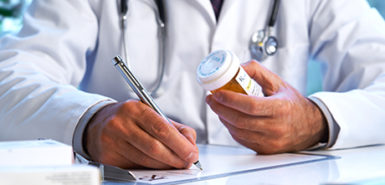
Medicine sales jumped 13 percent, to nearly $374 billion, in 2014 after a period of mostly low single-digit growth, according to the report released Tuesday by the IMS Institute for Healthcare Informatics in Parsippany, N.J.
Last year’s increase was the largest since 2001, as spending rose 17 percent to nearly $174 billion on the growth of new “blockbuster” drugs, the report said.
For the report, the IMS Institute tallies U.S. drug spending across all settings—from hospitals to retail pharmacies—and outlines the forces channeling that growth. The institute received no drug company or government funding for the report.
New drug innovation, higher sticker prices and fewer patent expirations on brand-name medications led to sharply higher spending last year, the study authors noted.
“The good news is there’s a lot going on in terms of new drug development—a record number of new treatments and a strong pipeline that suggests we’ll continue to see real high levels of innovation coming into the market,” said one of the report’s authors, Murray Aitken, executive director of the IMS Institute for Healthcare Informatics.
The downside is that many of these new treatments are being placed on the highest cost-sharing tiers of health plans’ prescription drug lists of covered drugs, patient advocates said. In some cases, specialty medicines are not covered at all.
That leaves patients paying a significant share, or all, of their drug costs.
Daniel Klein, president and CEO at the Patient Access Network Foundation in Washington, D.C., said health benefit plans increasingly “bake in” high out-of-pocket costs, leaving many people underinsured.
“When you get into the specialty drug tiers, you can easily be looking at 40 percent coinsurance,” Klein said.
Coinsurance is the percentage of the cost of covered medicines that patients have to pay themselves. Klein’s organization helps insured patients pay their share of the cost of medicines for cancer, chronic illness and rare diseases.
Specialty drugs grew by 26.5 percent last year, the IMS Institute report found. This category includes injectables and other high-cost medicines that specialists typically prescribe. These drugs now account for one-third of spending on medicines, according to the report.
Four breakthrough medicines for treating the liver disease hepatitis C accounted for $11.3 billion in spending. That means the new hepatitis C medications accounted for nearly half of the $24.5 billion spent on new products in 2014, the report noted.
Sovaldi, one of the newly heralded hepatitis C therapies, has a list price of $1,000 a pill, or $84,000 for a 12-week course of treatment, according to the drug’s manufacturer. The drug was approved by the U.S. Food and Drug Administration in 2013.
While health advocates say medicines like Sovaldi vastly improve patient outcomes with fewer side effects, they worry that the prices of such specialty medicines are unsustainable. Those costs pose a huge financial burden on public health programs like Medicare and Medicaid, as well as taxpayers.
At an event on Capitol Hill last week, the Campaign for Sustainable Rx Pricing focused attention on “this trend of exorbitant drug pricing,” which includes a number of cancer drugs, said Kelly Peuquet, a policy analyst at the National Coalition on Health Care in Washington, D.C., the group that leads the campaign.
Are specialty drugs worth the money?
Because of the larger benefits they offer, “oftentimes they do represent reasonable value for the money,” said James Chambers, an investigator at Center for the Evaluation of Value and Risk in Health at Tufts Medical Center in Boston. Chambers published a study last October in the journal Health Affairs that examined health gains associated with specialty medicines compared with traditional drugs.
But, he added that the value of these drugs varies case by case. “We found that almost 30 percent of new drugs were no better than older drugs,” Chambers said.
As the health system transitions from fee-based provider payments to value-based reimbursement, report co-author Aitken said he anticipates “a rethinking of the role that medicines play [and] the importance of getting a patient on the right medicine as quickly as possible.”
 /a>
/a>
 /a>
/a>
 /a>
/a>